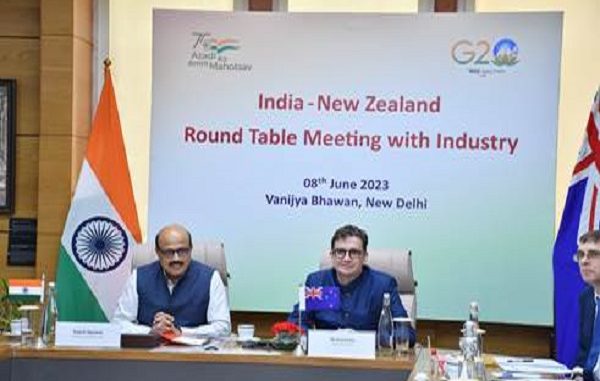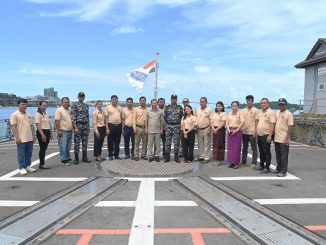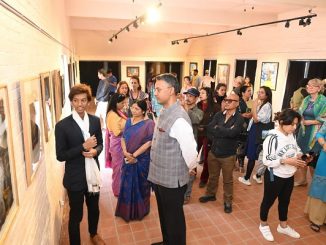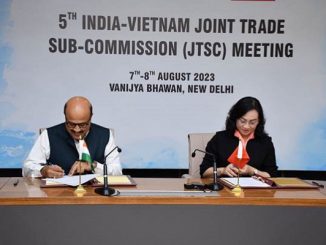
Jun 09: The first Round Table Joint Meeting between India and New Zealand with the industry and industry associations of both countries took place today in New Delhi. The meeting was co-chaired by the Additional Secretary, Department of Commerce, Government of India, Shri Rajesh Agarwal and the High Commissioner of New Zealand in India, Mr David Pine.
Looking at the present quantum of bilateral trade between the two countries, both sides acknowledged the huge potential in the India and New Zealand partnership and the need for bringing in synergy for enhanced economic relations in areas of mutual interest. It was a common understanding that there is a need to work beyond any free trade agreement and explore other areas where both can complement each other. The discussions also focused on taking forward the objectives of the Joint Trade Committee (JTC), formed under the Bilateral Trade Agreement of 1986.
The New Zealand High Commissioner, in his brief remark, emphasized collective efforts keeping in mind the principles of mutual benefits, proportionality, facilitating trade and association with private sectors. Some of the areas explored by him included the promotion of a Unified Payment Interface (UPI) system, carbon credit cooperation, economic cooperation through sectoral arrangements and working together on specific issues like the comprehensive proposal made by Zespri and prioritization of requests on non-tariff measures for bilateral gains to the businesses of both the sides. The High Commissioner also informed that India New Zealand Business Council has brought out a report in April 2023 on “India New Zealand –Relationship ready for next phase”, reflecting feasible areas of cooperative activities for economic prosperity. He also emphasized increasing the air connectivity links between the two countries.
Shri Rajesh Agarwal mentioned strengthening the existing institutional mechanism for improving bilateral trade and emphasized on creation of a structure for working on cooperation and collaboration issues. This could include establishing a working group at the Joint Secretary level to work on specific identified issues and once the ideas and the corresponding cooperative activities are concretized, the same can be scaled up and finalized during the Joint Trade Committee meeting. He further stated that it would require a concerted effort from both sides and should take into account deliberations at G2G, B2B and G2B interactions.
Sh. Rajesh Agarwal appreciated the positivity in the discussion leading to the tentative identification of various areas of cooperation including the facilitation of the UPI system, carbon credit, package proposal on Kiwi fruits, trans-shipment hub, prioritization of bilateral trade issues for their timely resolution, collaboration on technology issues, cooperation in services such as work visa related issues, improving the banking relations further, etc. He emphasized the need for a proactive operational framework for mutual benefit by creating working groups which would feed to the Joint Trade Committee with concrete ideas and the solution thereof.
The Indian industry representative from services sectors like IT and ITeS, logistics and banking sector as well as manufacturing sectors namely food processing, pharmaceuticals, automobile, construction and power made useful interventions on the bilateral issues and the huge potential and ample opportunities available between both the economies which needs to be nurtured through such interactions and actions thereof.
The industry and industry associations from the New Zealand side, while calling it a significant moment in the economic relationship between the two countries, emphasized the need to speed up the activities and continue the dialogue in a more structured way like the present one.
Both sides were unanimous on the need for having more government-to-industry dialogues for concrete mutual benefits.
Disclaimer: We donot claim that the images used as part of the news published are always owned by us. From time to time, we use images sourced as part of news or any related images or representations. Kindly take a look at our image usage policy on how we select the image that are used as part of the news.


